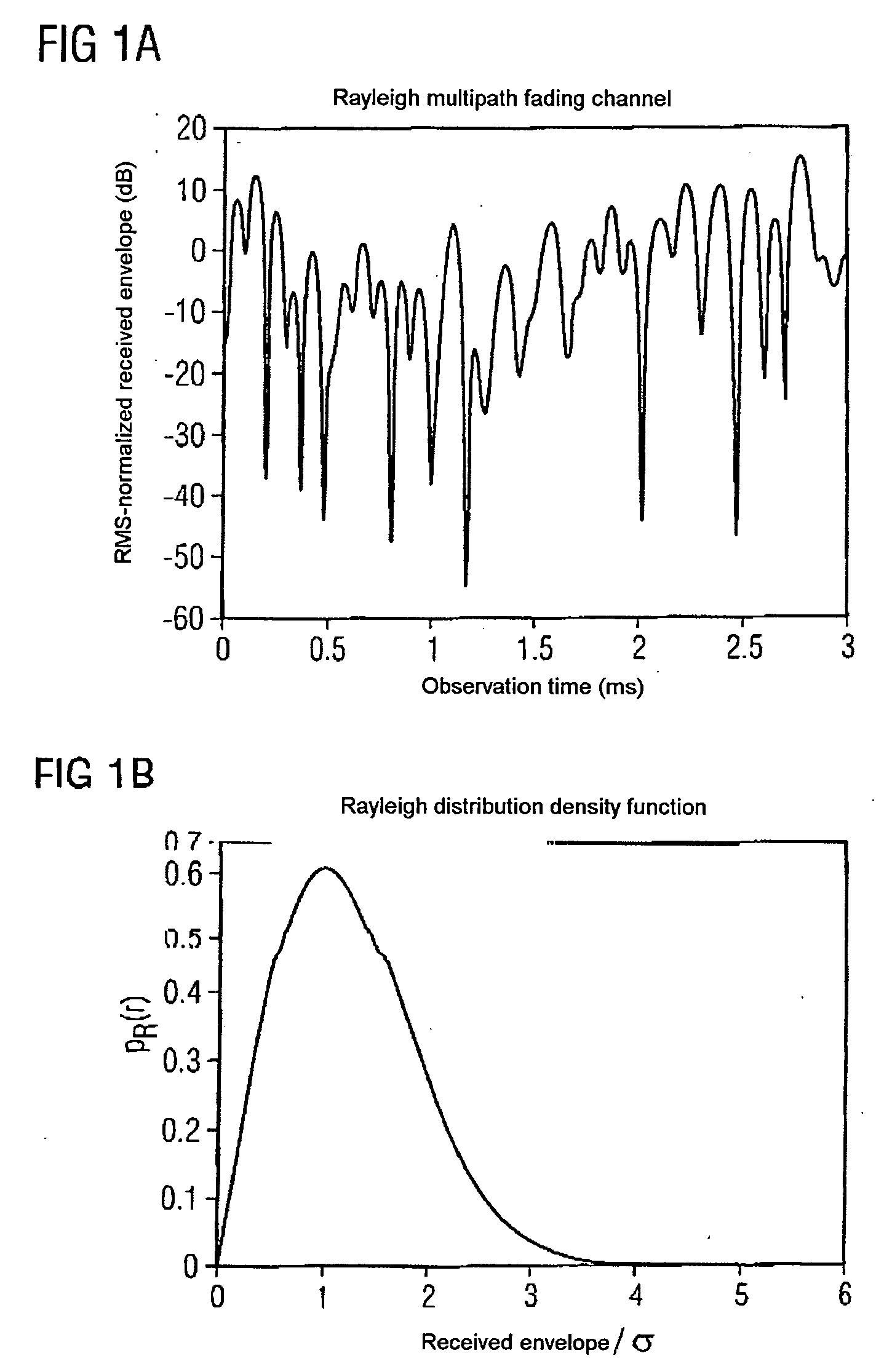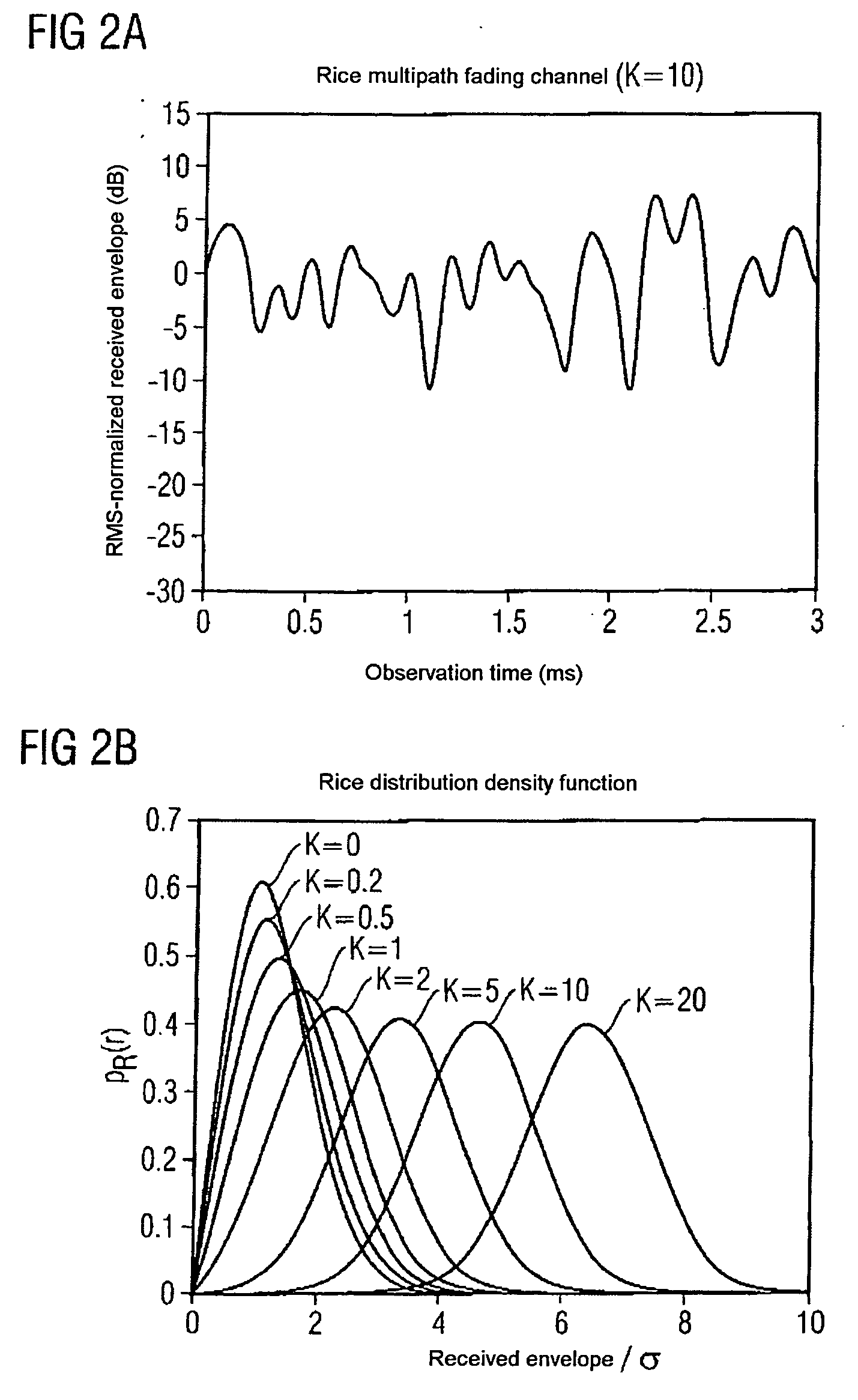Reliability and the accuracy of position-finding methods by estimation of the rice factor of a radio link
- Summary
- Abstract
- Description
- Claims
- Application Information
AI Technical Summary
Benefits of technology
Problems solved by technology
Method used
Image
Examples
Embodiment Construction
[0039] As is known, the envelope of the sum of the Gaussian-distributed noisy signals which correspond to the two quadrature signals has a Rayleigh distribution. The Rayleigh distribution is therefore used in order to describe the statistical nature of the received envelopes of a multipath signal that is subject to fading. If x and y are independent Gaussian-distributed random variables with a mean value of zero and a common variance σ2, then pR (r=√{square root over (x2+y2)}) has a Rayleigh distribution. FIG. 1a shows a Rayleigh-distributed signal envelope as a function of time, and FIG. 1b shows the Rayleigh distribution function (pfd, probability density function) which is given by: pn(r)={rσ2·exp(-r22 σ2);0≤r≤∞0;r0.(1)
[0040] The non-central moments of the Rayleigh distribution are derived to give: E{Rn}=2n / 2·σn·Γ(n2+1)(2)
where Γ{ } is the gamma function. In particular, the second and fourth non-central moments are given by:
E{R2}=2σ2
E{R4}=8σ4 (3).
[0041] If a dominant, st...
PUM
 Login to View More
Login to View More Abstract
Description
Claims
Application Information
 Login to View More
Login to View More - R&D
- Intellectual Property
- Life Sciences
- Materials
- Tech Scout
- Unparalleled Data Quality
- Higher Quality Content
- 60% Fewer Hallucinations
Browse by: Latest US Patents, China's latest patents, Technical Efficacy Thesaurus, Application Domain, Technology Topic, Popular Technical Reports.
© 2025 PatSnap. All rights reserved.Legal|Privacy policy|Modern Slavery Act Transparency Statement|Sitemap|About US| Contact US: help@patsnap.com



